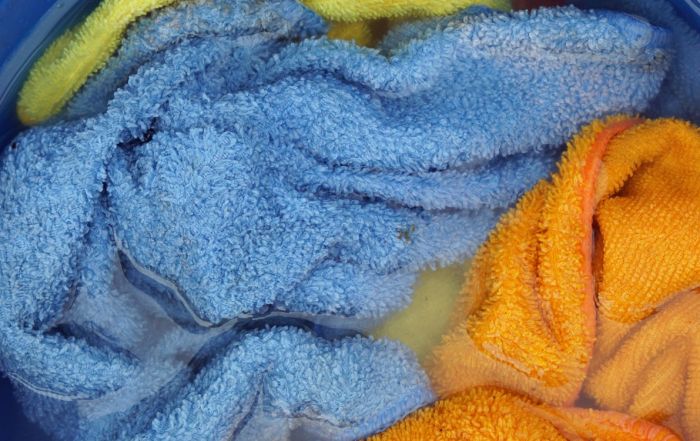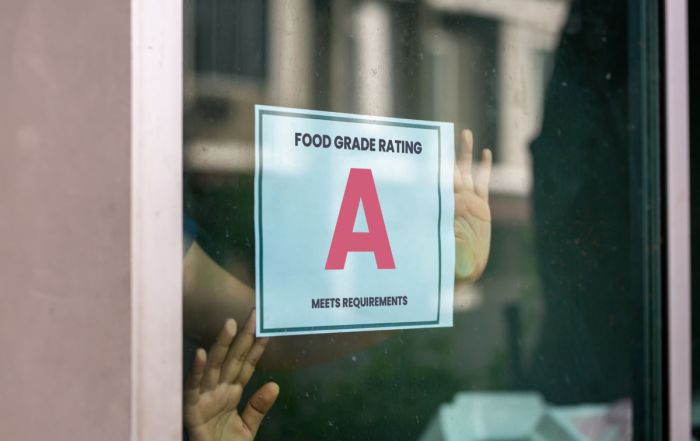Was that last 24 Hour “Bug” You Had Really a Foodborne Illness in Disguise?
Within this blog, I have discussed many foodborne pathogens: E. coli, Hepatitis, Salmonella, Listeria monocytogenes, and Campylobacter. But we’ve somehow managed to omit Staphylococcus aureus (S. aureus).
It isn’t that it is any less important than the others we have discussed. S. aureus causes a wide variety of infections, from skin infections to diseases that can be potentially fatal. And while it isn’t among the top foodborne illnesses in the United States, estimates indicate that S. aureus causes just less than 250,000 illnesses in the United States each year. It should be noted through, that these incidences may be much higher than estimated due to non-reports of the illness.
S. aureus can grow in a wide range of temperatures, from 44°F to 119°F and while most pathogens thrive in moist environments, S. aureus has the ability to survive dry and otherwise stressful instruments, such as the human nose and skin, and even on clothing and other surfaces.
The formation of these toxins is one reason why cooking the food will be of no use in protecting yourself or your guests.
Symptoms of S. aureus include nausea, vomiting, stomach cramps, and in most cases, diarrhea. Symptoms can begin as little as 30 minutes after consuming a food or beverage item contaminated with S. aureus but can sometimes take as long as 8 hours to manifest in symptoms. These symptoms usually last for no longer than 24 hours and rarely result in severe illness.
Does this sound like the last “24-hour” bug you or your children may have had? This is one of the reasons why it is believed that the incidence of S. aureus is much higher than estimated, most simply do not visit a medical professional who can diagnose S. aureus.
The reason why S. aureus can make someone ill so quickly is because of the nature of the bacteria. In the case of an S. aureus illness, the bacteria may have multiplied on the food since the time the food came into contact with the host food item. These bacteria then leave behind a toxin on the food, which is what causes the illness. For example, think of a food that might have a cleaning chemical on it – it would make you sick very quickly after ingesting the item.
The formation of these toxins is one reason why cooking the food will be of no use in protecting yourself or your guests. Yes, cooking the product will eliminate the S. aureus bacteria, but it does not eliminate the toxin that the bacteria left behind.
Food items commonly implicated in S. aureus illnesses include milk and cheeses, but other food products that have been implicated in such illnesses include cold salads, sliced deli meats, sandwiches, cream-filled pastries, and puddings.
S. aureus is just one of the reasons why it is important to pay attention to safe food handling throughout the entire life of a product. Avoiding cross contamination, ensuring proper personal hygiene (unlike the sushi chef picture we used for the blogs – did you notice they were not wearing gloves?), and storing food at proper temperatures are key steps in protecting your operation from a S. aureus outbreak (and almost all other foodborne illnesses). Risk Nothing.
READ MORE POSTS
Embracing Technology for Enhanced Food Safety in Foodservice Operations
Technology. We love it, we hate it. I’ve always been fascinated by technology; I remember getting my first Blackberry in the mid-90s and thinking it was the pinnacle of technological advances. Before that, I remember ordering a dictation program in college that was going to revolutionize the way I “typed” my assignments. Looking back, it really wasn’t worth the box that the program came in. Now, we have ChatGPT that will write the entire paper for us!
Meat Color and Doneness: Persistent Pinking
Late in June, my family and I were able to visit the Black Hills, an area of the country in which I have not had the opportunity to spend much time. One evening, as we dined at a local restaurant, I observed a table across the dining room sending back a dinner. While I couldn’t hear the entire conversation and I certainly wasn’t trying to eavesdrop, it was apparent that the customer was unhappy with the cooking of their hamburger and was sending it back because it was too pink in the middle. That immediately brought to my mind the phenomenon known as persistent pinking. A term I became familiar with because of work done by some colleagues here at Kansas State, which they present each summer to a group of foodservice operators who join us on-campus for an in-depth week-long look at all things food safety.
Quat Binding – Why this Can Have a Disastrous Impact on Your Sanitation Program.
In June, I had the opportunity to represent FoodHandler and speak on food safety behavior for customers of Martin Bros. Distributing in Waterloo, Iowa. One of the questions that was asked caught me a little off guard. The question was about quat binding. It caught me off guard not because it was a bad question, but only because it was not something I had previously been asked nor had not yet been exposed to the phenomenon. However, I soon learned that in certain jurisdictions, it is resulting in changes to how sanitizing cloths are to be stored in sanitizing buckets (or not) in the foodservice industry. When I returned home from the trip, I had to dig into it to learn about what quat binding is and how it might impact foodservice operations.
Are Grades for Foodservice Inspections a Good Idea?
I generally try to stay away from controversial topics in my blog, but this is one I thought it might be interesting to discuss. Occasionally on my travels, I will come across a state or a local jurisdiction that requires foodservice inspection scores be posted in the window of the establishment. The idea is to allow would-be customers the ability to see how the foodservice operation in which they are about to eat scored on their latest health inspection.










